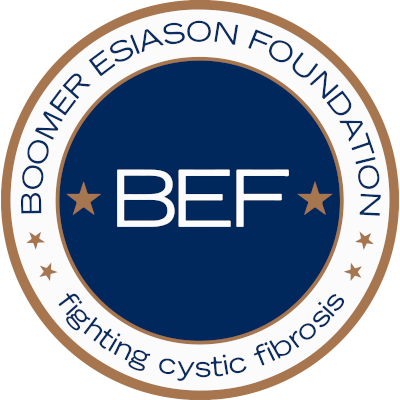
Last month, BEF attended the Milken Institute Future of Health Summit in Washington D.C. The conference was a who’s who of leaders in public health, biotech, pharma, philanthropy, finance, government, and healthcare. A common theme throughout the conference was the challenge of meeting an exponentially growing list of unmet needs with thoughtful, effective, and efficient solutions. The agenda was thoughtfully crafted and, unlike most conferences, most panels feature a diversity of thought which sometimes erupted in professional debate.
We began our time at the conference listening to a panel on the future of gene and cell therapies, which are at the forefront of an exciting frontier in medicine whose promises are enormous, but so are their price tags. The discussion centered around the affordability of these treatments, which hinges on four major points: manufacturing, technology, data, and policy. Scaling these therapies and developing infrastructure to share information are some future directions that could broaden gene and cell therapies’ accessibility and drive these technologies further into the mainstream. This is imperative for the 10% of people living with CF who do not benefit from existing CF modulator therapies and for the broader CF community. Cell and gene therapies are rapidly progressing toward a treatment for the final 10% and toward a cure for all people with CF. Once these therapies are developed, affordability and accessibility will be key challenges to overcome in order to ensure that they can get to the people who need them the most.
The second panel we attended focused on investing in health care innovation. The panel consisted of leaders in the financial and biotech realms who discussed the challenges facing health start-ups today, particularly regulatory barriers and the high cost of capital. When the cost of capital is high, the risk is magnified for operators and financers. The importance of discipline, flexibility, and a focus on patient centricity in business models were all key themes that emerged from the leaders’ varied perspectives. Although it may be a challenging time for health start-ups, with the right leadership, management, and value proposition, there is potential for greatness. CF is a major success story in healthcare innovation and a shining example of how effective partnerships and regulations can work together to produce a life-changing medical breakthrough. However, we can’t stop there. The same drive and creativity must be applied to ensuring that 100% of people living with CF have access to a treatment and a cure.
Day one ended with a deep dive into meeting patient needs, particularly how to overcome barriers to patient engagement. The panelists weighed in on developing trust between patients and providers, making clinical trials more accessible, treating the whole patient, and recognizing the importance of non-medical factors in health outcomes. To develop trust with patients, providers must participate in the communities that they serve and develop reciprocal relationships by listening to patients’ needs. One key takeaway was that healthcare should take time to learn from other industries like finance, hospitality, and travel when it comes to consumer centricity.
The second day began with a fascinating discussion of the threat of antimicrobial resistance (AMR) featuring BEF’s Gunnar Esiason, who shared his perspective as a patient advocate and weighed in on the importance of developing novel antibiotics to bolster the US’s currently inadequate antibiotic supply. AMR is not just a future threat– it is a current, pressing problem. Senators Todd Young (R-IN) and Michael Bennett (D-CO),bipartisan cosponsors on a piece of legislation called the PASTEUR Act, followed up the panel with a discussion focused on financing a sustainable pipeline for new antibiotic development. They also pointed to the United Kingdom where a pilot reimbursement model is in place that shows how PASTEUR might work in the United States.
Next, leaders in philanthropy and pharmaceuticals took on the topic of “moonshot” philanthropy, which sets lofty, bold goals to solve seemingly insurmountable problems in health. Strategies for reaching these “moonshots” included using capital in a complementary way to existing programs, using personal stories and patient perspectives to drive a philanthropic narrative, and finding intersections between the mission of an organization and the current zeitgeist. In many way, the Cystic Fibrosis Foundation’s venture philanthropy success has been seen as the playbook for transforming the prognosis of a killer condition, and was on the top of everyone’s mind.
Rare disease research is an essential branch of research that has seen tremendous progress in the past few decades. However, this progress is far from complete, as the vast majority of people living with rare diseases do not have a treatment or a cure. Apart from the need to inspire innovation in drug development to treat these rare diseases, there is also a dire need to improve infrastructure to ensure that these drugs are delivered to the patients who need them. The panelists also emphasized the importance of centering the needs and voices of patients in developing future rare disease treatments.
We had the pleasure of meeting parents of children with rare diseases and learning more about initiatives that empower patients with resources and guidance on their way to discovering cures. Parents are powerful advocates and key drivers of change in the rare disease space. Partnerships between rare disease advocates can provide valuable insight for all involved, which is why it is so important to connect with the rare disease community outside of CF. Rare disease breakthroughs can lead to the development of policies, tools, and infrastructure that can translate to other groups and drive more cures for more people.
The conference ended with a discussion of the balance between innovation and access, a key point of tension among the panels. ARPA-H Director Renee Wegrzyn and the 16th NIH Director Francis Collins discussed the importance of healthcare delivery as a tool to improve access to innovative medicines. Of course, Francis Collins is practically a headlining celebrity in the CF community for his work to identify the CF-causing gene mutation.
In short, the Future of Health Summit was inspiring and intellectually challenging. Although we walked away aware of more problems in health than solutions, the spirit of cross-disciplinary collaboration and bipartisan partnership made us hopeful for the future. While there was a lot of technical talk of ROIs, regulatory hurdles, and biological minutiae, there was also a deep sense of compassion and care. Many of the speakers made it clear that they were driven by their desire to make a real difference and their commitment to end suffering. The emotional core of health must not be overlooked as we forge ahead to find new solutions to both age-old and rapidly emerging problems.
The main takeaways from the Milken Institute Future of Health Summit:
- Patient centricity is the future of healthcare. Patients are active consumers of healthcare, not passive beneficiaries. They need to be central in the current and future development of the healthcare landscape. Patient engagement is key to creating solutions that address the growing list of unmet needs that pervade healthcare.
- Policy needs to meet the moment. Effective policies can address the inefficiencies and gaps of the US healthcare system, but can also bolster its current strengths. Politicians and government officials need to listen to patients when crafting policy that meets their needs and ensures that all people have accessible, affordable, and comprehensive care.
- Collaboration and communication are vital to bridging gaps in healthcare. There are far too many of these gaps and they are often much too wide. Communication between the private and public sectors is key to ensuring both innovation and access in healthcare, while better, more effective communication between health professionals and the general public can empower people to take charge of their health.
